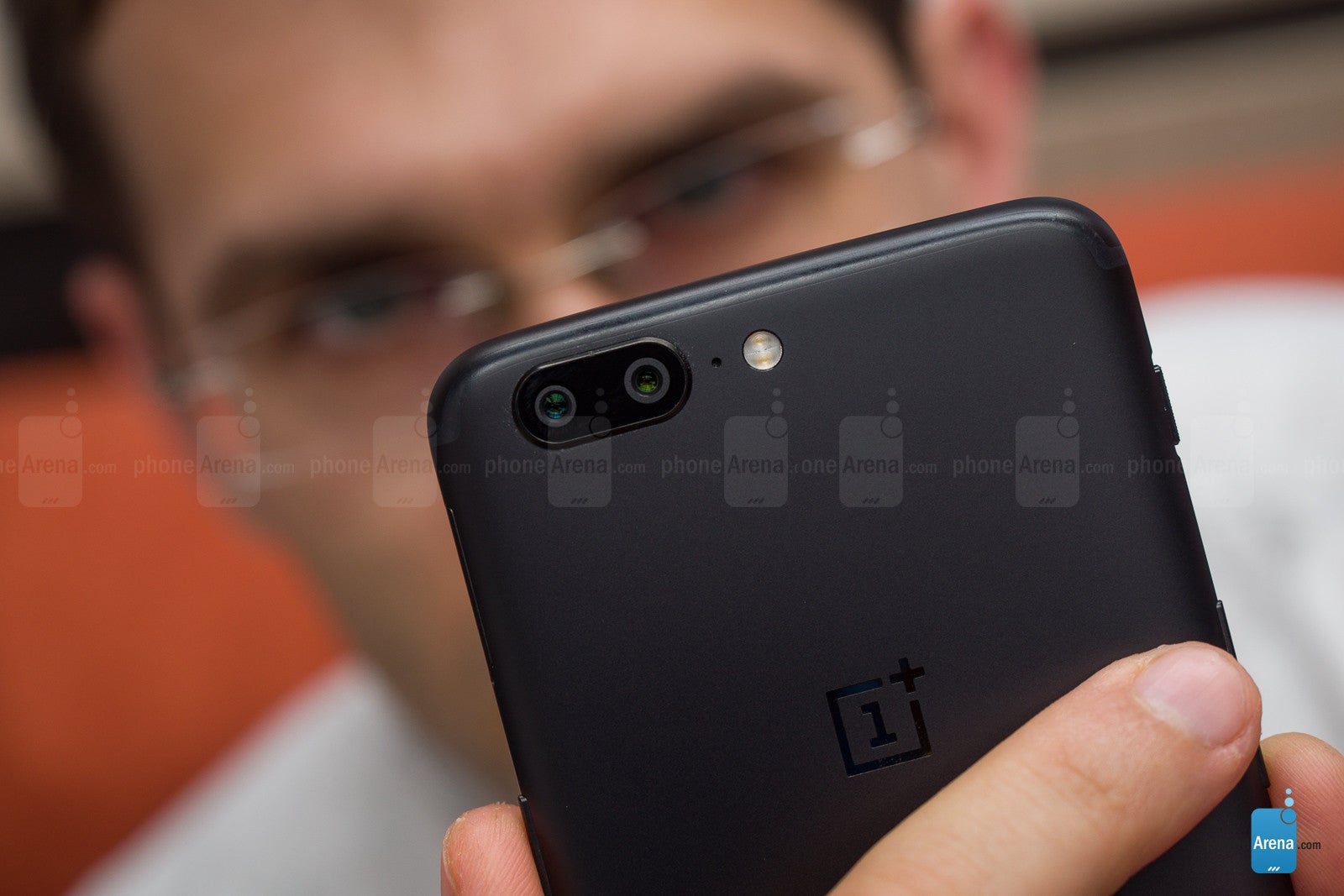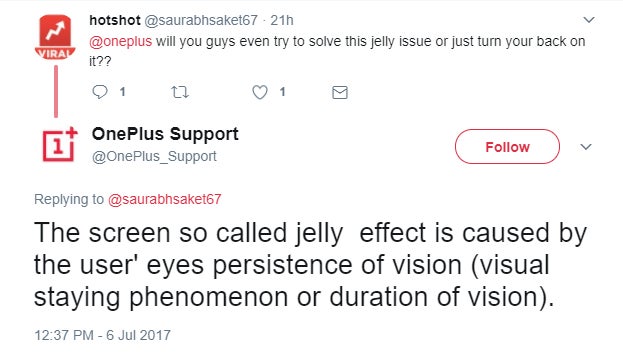OnePlus backtracks on the "Jelly effect" again. (Update: not really)

UPDATE: OnePlus has reached out to us to clarify that the statement in the tweet was not official. The tweet has since been removed to avoid confusion.

Yes, "persistence of vision" is a thing — it's the phenomenon which lets you see a light trail after a swinging lightbulb in a dark area. It's also the culprit behind why the "rubber pencil trick" is a thing — wiggling a pen between your fingers and observing it at the right angle makes it look like it's bending when in reality, it isn't. Basically, the stream from your eyes to your brain comes with a tiny delay, which causes all of these phenomena to occur.
Considering that the OnePlus 5 is a pretty solid phone for a very good price, we would say that a display being a bit wonky (only) when you are scrolling up or down on it is not really a huge deal. But how that issue is handled is a bit... baffling?
No images
source: OnePlus Support (Twitter)
Follow us on Google News













Things that are NOT allowed:
To help keep our community safe and free from spam, we apply temporary limits to newly created accounts: